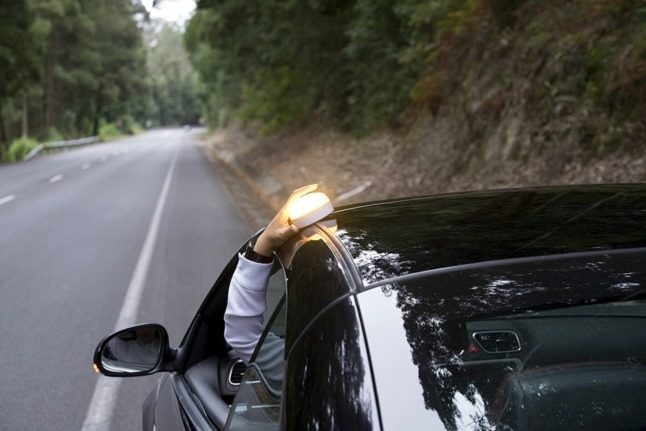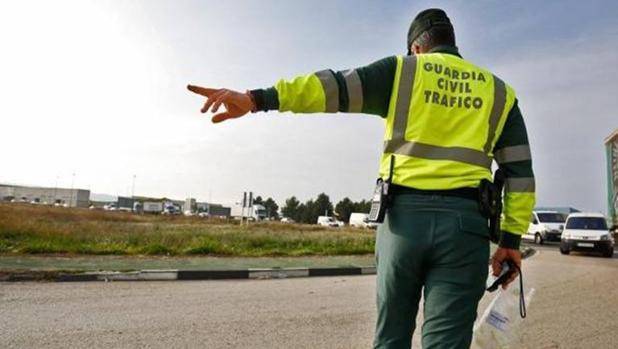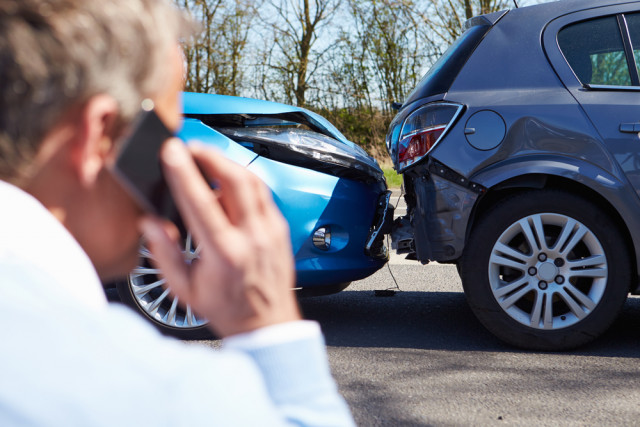What you need to do if you're in a road traffic accident in Spain

Hopefully, it will never happen. But if you are involved in a road traffic accident in Spain, then you need to know what to do.
Before you even set off on a journey in Spain you need to make sure that you have the compulsory documentation in your car.
The essential paperwork that must be in the car at all times is:
- Driving Licence (Carnet de Conducir)
- Car registration document or rental document (Permiso de Circulación)
- ITV certificate (Ficha Técnica)
- Insurance policy document
- European Accident Statement (Declaración Amistosa de Accidente de Automóvil) DOWNLOAD HERE
Also compulsory
- Fluorescent high visibility jacket (one each for driver and all passengers)
- Two warning triangles
Compusory in 2026 but already advisable in 2021
- The new V-16 emergency light (FIND OUT MORE)
In the event of an accident there is a protocol that must be followed. It helps to familiarise yourself with the legal steps and advice issued by police so that you know what to do, just in case.
The Spanish Traffic Department (DGT) have come up with a mnemonic to help drivers remember what to do in an accident. PAS stands for Proteger (Protect) Avisar (raise the alarm) and Socorrer (Help).
¿👋Cuales son las 3 letras que debes recordar
ante un siniestro vial?
Dame una P, dame una A y dame una S 👉#PAS
1º Proteger
2º Avisar
3º Socorrer
Siempre por ese orden.
👉https://t.co/jxXSQ45Nif#SeguridadVial #VeranoSeguro pic.twitter.com/uFg7EFdaru
— Dir. Gral. Tráfico (@DGTes) June 22, 2021
Here’s a breakdown of what to do:
STEP ONE
If you are involved in an accident:
Stop immediately, in a safe a place as possible, and switch on hazard (warning) lights.
The driver should put on a hi-vis jacket and ask passengers to do the same.
Passengers should move away from the vehicle to a place of safety, behind a barrier or fencing away from oncoming traffic.
Place the two warning triangles to alert other drivers of the obstacle. JULY 2021 UPDATE: Spain’s DGT traffic authority has changed the wording of its official advice for what should be done in the event of an accident to incorporate situations in which the use of the new V-16 emergency light is allowed but not the use of emergency triangles.
In the event that your car breaks down or is in accident, the triangles should not to be placed on the ground if to do so you have to walk along the hard shoulder or along one of the lanes of the road.
That means drivers can only get out of their vehicles to put the emergency triangles down if they can walk along the sidewalk/pavement or outside of the road in the case of secondary roads.
Previously, Article 130.3 of Spain’s Traffic Code didn’t give these details, stating that placing down the triangles was only discouraged “if the traffic conditions do not allow for it”.

The DGT is also no longer recommending that triangles be placed 50 metres away from the vehicle to be visible from 100 metres away.
What this ultimately means for drivers is that unless they have the new V-16 emergency light, there will be situations in which they won’t be able to pre-warn other drivers of their accident.
READ MORE: The new device traffic authorities want you to keep in your car
STEP TWO
If it is a serious accident and someone is injured then:
Call the emergency services on 112 and tell them exactly where you are – Spain helpfully places posts along the side of the road with a kilometre marker to identify where you are. Give them the name of the road, the direction you were travelling and what km marker you are closest to.
Inform them if anyone is injured and what type of injuries as far as you can tell.
Provide any details of special circumstances, such as that someone is trapped in the vehicle or that a truck is carrying flammable materials.
If no one is hurt and the damage to vehicle is minor and you can drive away then there is no need to call 112.

In the event of an accident there is a protocol that must be followed. Stock photo: Guardia Civil
STEP THREE
Do not move an injured person (unless it is absolutely necessary for safety reasons).
If a motorcyclist is involved, DON’T remove their helmet.
DON’T give them anything to eat or drink, not even a sip of water.
Do make any injured person as comfortable as you can without moving them. Cover them with a coat or blanket.
Talk to them to keep them calm and tell them help is on the way.
STEP FOUR
If police do not need to be called then make a note of the other vehicle’s number plate, make and model of car and driver's name, address, policy number and driver's license number.
Take the name and contact details of any witnesses.
Take photos of the scene of the accident and draw a sketch of what happened. It could be useful in the insurance report.
If you have damaged a car and the owner is not there, for example if you crashed into a parked car, you must contact the nearest police station to let them know.
STEP FIVE

If it is a minor accident and no-one has been injured then it is common for both parties to complete an accident report form Declaración Amistosa de Accidente.
This is an ‘amicable statement’ where both drivers agree on the circumstances of the accident.
BUT you are not legally obliged to fill out this form and if you are not in agreement over what happened you can refuse. You can write it in English if you so wish but don’t sign a statement, particularly one written in Spanish, unless you are sure you understand and agree with every word.
The form has two sections in blue and yellow. Blue is marked as "Vehiculo A" and yellow as "Vehiculo B". Make sure you both have a copy.
If the police arrive at the scene, they will carry out their own report, referred to as an "Atestado Policial".
STEP SIX
If the car cannot be driven away then you must call out a Grua (tow truck), most insurance policies include breakdown cover and will organise to recover the vehicle and transport you back to your home.
If you are able to drive away from the accident you must legally tell the insurance company within 5-7 days of the event or it may affect the claim.
If injuries were caused by the accident, make sure to get medical certificates to supply the insurance company and in the event that you chose to take legal action.
STEP SEVEN
If the accident is not your fault, you may consider taking legal action, in which case you must report the incident to the authorities within 2 months. It’s a good idea to consult a lawyer and take legal advice.
READ ALSO:
Comments
See Also
Before you even set off on a journey in Spain you need to make sure that you have the compulsory documentation in your car.
The essential paperwork that must be in the car at all times is:
- Driving Licence (Carnet de Conducir)
- Car registration document or rental document (Permiso de Circulación)
- ITV certificate (Ficha Técnica)
- Insurance policy document
- European Accident Statement (Declaración Amistosa de Accidente de Automóvil) DOWNLOAD HERE
Also compulsory
- Fluorescent high visibility jacket (one each for driver and all passengers)
- Two warning triangles
Compusory in 2026 but already advisable in 2021
- The new V-16 emergency light (FIND OUT MORE)
In the event of an accident there is a protocol that must be followed. It helps to familiarise yourself with the legal steps and advice issued by police so that you know what to do, just in case.
The Spanish Traffic Department (DGT) have come up with a mnemonic to help drivers remember what to do in an accident. PAS stands for Proteger (Protect) Avisar (raise the alarm) and Socorrer (Help).
¿👋Cuales son las 3 letras que debes recordar
— Dir. Gral. Tráfico (@DGTes) June 22, 2021
ante un siniestro vial?
Dame una P, dame una A y dame una S 👉#PAS
1º Proteger
2º Avisar
3º Socorrer
Siempre por ese orden.
👉https://t.co/jxXSQ45Nif#SeguridadVial #VeranoSeguro pic.twitter.com/uFg7EFdaru
Here’s a breakdown of what to do:
STEP ONE
If you are involved in an accident:
Stop immediately, in a safe a place as possible, and switch on hazard (warning) lights.
The driver should put on a hi-vis jacket and ask passengers to do the same.
Passengers should move away from the vehicle to a place of safety, behind a barrier or fencing away from oncoming traffic.
Place the two warning triangles to alert other drivers of the obstacle. JULY 2021 UPDATE: Spain’s DGT traffic authority has changed the wording of its official advice for what should be done in the event of an accident to incorporate situations in which the use of the new V-16 emergency light is allowed but not the use of emergency triangles.
In the event that your car breaks down or is in accident, the triangles should not to be placed on the ground if to do so you have to walk along the hard shoulder or along one of the lanes of the road.
That means drivers can only get out of their vehicles to put the emergency triangles down if they can walk along the sidewalk/pavement or outside of the road in the case of secondary roads.
Previously, Article 130.3 of Spain’s Traffic Code didn’t give these details, stating that placing down the triangles was only discouraged “if the traffic conditions do not allow for it”.

The DGT is also no longer recommending that triangles be placed 50 metres away from the vehicle to be visible from 100 metres away.
What this ultimately means for drivers is that unless they have the new V-16 emergency light, there will be situations in which they won’t be able to pre-warn other drivers of their accident.
READ MORE: The new device traffic authorities want you to keep in your car
STEP TWO
If it is a serious accident and someone is injured then:
Call the emergency services on 112 and tell them exactly where you are – Spain helpfully places posts along the side of the road with a kilometre marker to identify where you are. Give them the name of the road, the direction you were travelling and what km marker you are closest to.
Inform them if anyone is injured and what type of injuries as far as you can tell.
Provide any details of special circumstances, such as that someone is trapped in the vehicle or that a truck is carrying flammable materials.
If no one is hurt and the damage to vehicle is minor and you can drive away then there is no need to call 112.

In the event of an accident there is a protocol that must be followed. Stock photo: Guardia Civil
STEP THREE
Do not move an injured person (unless it is absolutely necessary for safety reasons).
If a motorcyclist is involved, DON’T remove their helmet.
DON’T give them anything to eat or drink, not even a sip of water.
Do make any injured person as comfortable as you can without moving them. Cover them with a coat or blanket.
Talk to them to keep them calm and tell them help is on the way.
STEP FOUR
If police do not need to be called then make a note of the other vehicle’s number plate, make and model of car and driver's name, address, policy number and driver's license number.
Take the name and contact details of any witnesses.
Take photos of the scene of the accident and draw a sketch of what happened. It could be useful in the insurance report.
If you have damaged a car and the owner is not there, for example if you crashed into a parked car, you must contact the nearest police station to let them know.
STEP FIVE

If it is a minor accident and no-one has been injured then it is common for both parties to complete an accident report form Declaración Amistosa de Accidente.
This is an ‘amicable statement’ where both drivers agree on the circumstances of the accident.
BUT you are not legally obliged to fill out this form and if you are not in agreement over what happened you can refuse. You can write it in English if you so wish but don’t sign a statement, particularly one written in Spanish, unless you are sure you understand and agree with every word.
The form has two sections in blue and yellow. Blue is marked as "Vehiculo A" and yellow as "Vehiculo B". Make sure you both have a copy.
If the police arrive at the scene, they will carry out their own report, referred to as an "Atestado Policial".
STEP SIX
If the car cannot be driven away then you must call out a Grua (tow truck), most insurance policies include breakdown cover and will organise to recover the vehicle and transport you back to your home.
If you are able to drive away from the accident you must legally tell the insurance company within 5-7 days of the event or it may affect the claim.
If injuries were caused by the accident, make sure to get medical certificates to supply the insurance company and in the event that you chose to take legal action.
STEP SEVEN
If the accident is not your fault, you may consider taking legal action, in which case you must report the incident to the authorities within 2 months. It’s a good idea to consult a lawyer and take legal advice.
READ ALSO:
Join the conversation in our comments section below. Share your own views and experience and if you have a question or suggestion for our journalists then email us at [email protected].
Please keep comments civil, constructive and on topic – and make sure to read our terms of use before getting involved.
Please log in here to leave a comment.